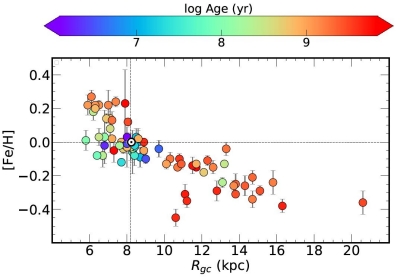Gaia-ESO is an ESO Public Spectroscopic Survey (under ESO Programme IDs: 188.B-3002, 193.B-0936, 197.B-1074; PIs: Gerry Gilmore & Sofia Randich) carried out with GIRAFFE and UVES on the VLT between 2012 and 2018. The survey targeted more than 100,000 stars, with 115,000 actually observed by the end of the survey. These stars are selected across all major components of the Milky Way, from halo to star-forming regions, with the goal of providing an homogeneous overview of their kinematics and elemental abundance distributions.
Fifth Gaia-ESO Data Release: the Catalogue with the Astrophysical Parameters for ~115,000 Stars

The DR5.0 release includes all the astrophysical parameters derived by the Gaia-ESO consortium for 114,324 stars. In detail the catalogue provides:
- the radial and projected rotational velocities,
- stellar parameters (effective temperature, surface gravity and metallicity),
- abundances of several elements,
- specific parameters for tracing accretion and activity in young stars,
- for the targets of the cluster fields the cluster probability membership is provided, calculated combining Gaia-ESO radial velocities with astrometry from Gaia EDR3 release (Jackson et al, 2022).
More information about the release content can be found in the accompanying documentation. The fifth data release from the Gaia-ESO survey is now available on the ESO archive, and it is accessible to the community via the ESO Catalogue Facility, programmatically, and via the Science Portal (specifically the catalogue preview gives you instantaneous access to the histograms of all the catalogues columns).
The Gaia ESO science catalogue published in the DR5.0 has been produced by the PIs and their collaborators, including CASU. The figure above shows the radial metallicity distribution traced by the open star clusters included in the Gaia-ESO sample. Symbols are colour coded by age.
